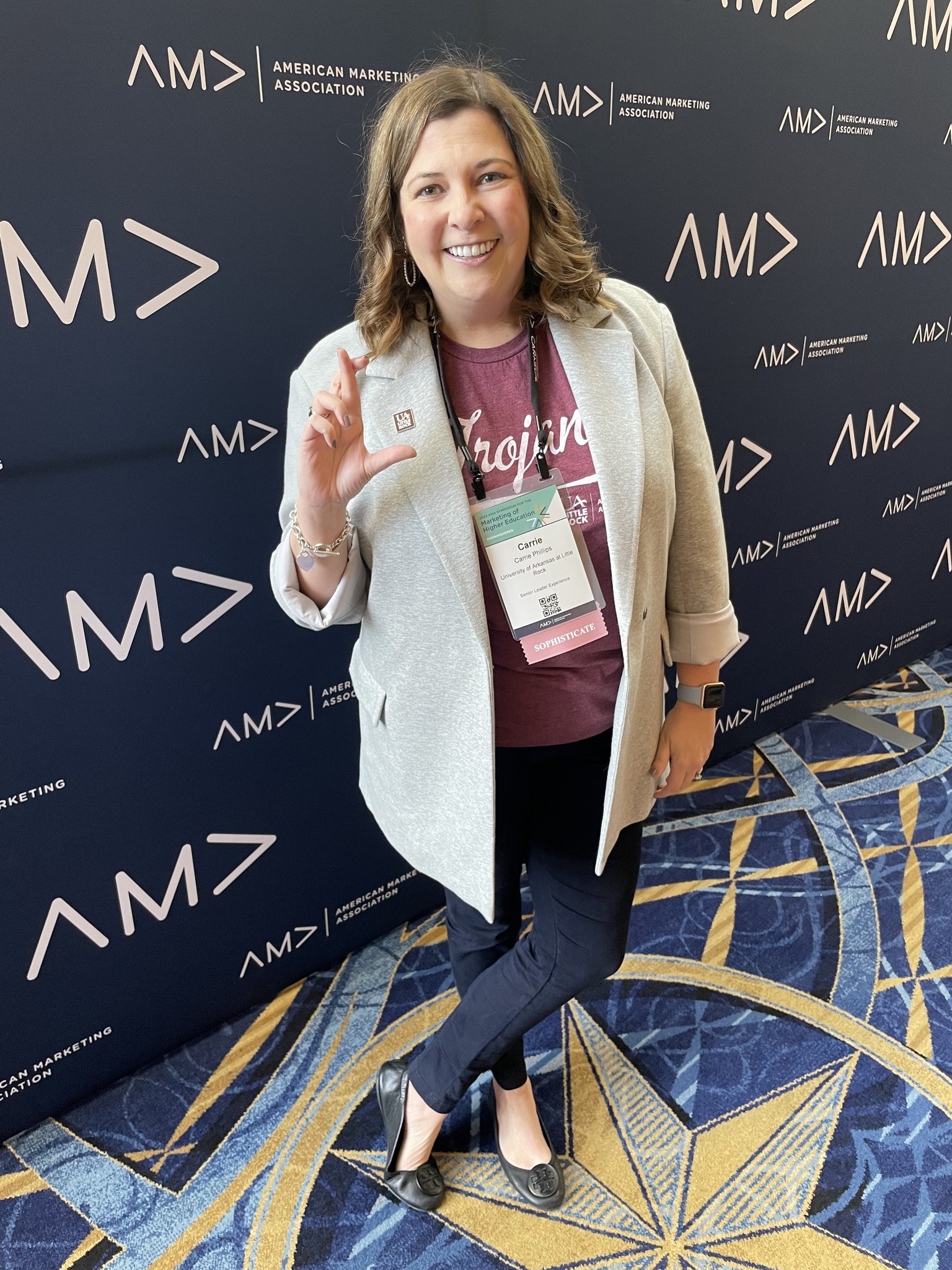Chief MarComm Officer Offers Insights on Strategies to Combat Enrollment Cliff

Dr. Carrie Phillips, chief communications and marketing officer at the University of Arkansas at Little Rock, is sharing insights into how communications and marketing teams can help colleges mitigate the impending enrollment cliff.
The enrollment cliff is a prediction by the Western Interstate Commission on Higher Education that there will be approximately 400,000 fewer college students in the United States between 2025 and 2037. This is a byproduct of the economic downturn in 2007 that caused birth rates to fall because families chose to delay or to not have children. Some estimates suggest the enrollment cliff represents a $4.2 billion dollar loss in tuition revenue.
“There is some surprise among higher education professionals about the numbers and the potential impact on higher education institutions,” Phillips said. “Some data says that we can expect as much as an 11 percent student decrease at regional public universities and as much as 14 percent of small institutions might close. When universities realize the potential impact of the enrollment cliff, many of the professionals I’ve spoken with are very interested in ways that universities can proactively address this problem.”
In November, Phillips shared her expertise through presentations with the American Marketing Association and the Association for the Study of Higher Education.
The presentations originate from her dissertation research that investigated how regional public universities are using marketing efforts to mitigate the impending enrollment cliff. Phillips graduated with a Doctor of Education in higher education administration from Texas Tech University in May and interviewed 15 chief marketing officers at higher education institutions in the southeastern region of the country for her dissertation.
“I need to say thank you to my chair, Dr. Stephanie J. Jones,” Phillips said. “She really helped me understand the process of my dissertation. She did an incredible job of shepherding me through the writing process and how I could tell this story afterwards. I owe her a debt of gratitude.”
To fight the enrollment cliff, Phillips found that it’s important for MarComm teams to work collaboratively with admissions offices to provide enrollment support such as regular messaging, social media content, and print packaging. MarComm teams also lead development efforts for university-wide strategies such as cohesive branding, strong storytelling, and integrated advertising efforts.
“First, marketing teams can help articulate what a brand is and why a brand is important,” Phillips said. “I think that helps build an emotional connection with people when they see themselves and see students like them. The collaboration with admissions and enrollment functions is a huge strategy that we need to continue developing. MarComm teams have the opportunity to be real change agents. We work with the entire campus and sometimes see a process that needs to be refined or a program that needs to be adjusted. We have an opportunity to help start some of those conversations. At the end of the day, the people who win in those processes are our students.”
Over time, Phillips said that MarComm team efforts should focus on emphasizing student retention, branding, and using marketing to engage new audiences. They can use data to support their work by ensuring marketing spends are efficient, finding new student audiences, testing marketing efforts, and enhancing personalization.
“I think, as higher ed professionals, long-term and lifelong learning is part of what we aspire to,” Phillips said. “By participating in these presentations, hopefully I can help share knowledge with others. I think everybody wins when professionals and practitioners are willing to share their best practices with each other.”
